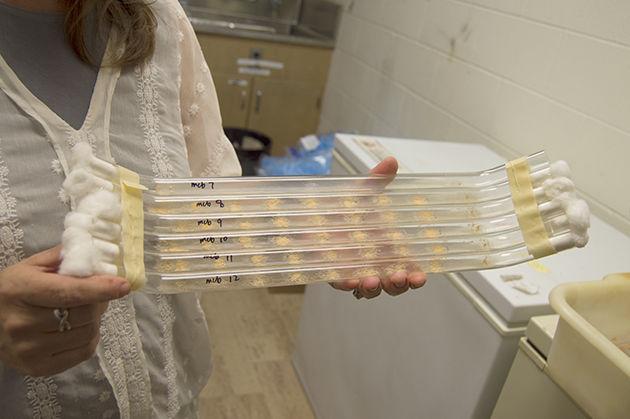In the modern day, clocks surround us in our daily lives, but no clock has such an impact on our lives as the one residing deep in our mind, influencing our daily lives far more than the mere digital and mechanical timekeepers ever could.
Deborah Bell-Pedersen, biology professor, aims to understand how our internal clocks, or circadian clocks, influence gene expression and behavior. The lab’s research uses Neurospora Crassa, commonly known as a type of bread mold, in order to discover more about how human clocks work.
Bell-Pedersen said because the clock effects nearly every aspect of the human body applications for her research are tremendous. From helping to fight cancer cells to easing burdens on night shift workers to even battling jet lag, knowledge of the clock in invaluable.
Bell-Pedersen said the clock has an impact on almost everything within the human body.
“The clock regulates when our gut and liver produces enzymes to break down food, and that happens during the day when we are normally eating,” Bell-Pedersen said. “But if you are working the night shift and are eating at night, those enzymes that would normally metabolize your food are not there, they just aren’t made, and so the food gets stored as fat.”
Bell-Pedersen said knowledge of the clock in incredibly important in health applications because of the way the clock changes human physiology depending on the time of the day.
“Tylenol produces a toxic byproduct, and that toxic byproduct is detoxified by an enzyme which is under the control of the clock and that’s produced during the nighttime, and so Tylenol taken during the nighttime to quite safe,” Bell-Pedersen said. “Tylenol taken during the day you get a lot of this toxic byproduct.”
Jennifer Jung, a second year graduate student in genetics, said the project is looking past the mechanisms of the clock to try to understand the clock’s relation to gene expression.
“It’s easy to say the clock is going to effect when you get sleepy and when you wake up, when you get hungry and stuff like that where you have rhythms in physiological processes,” Jung said. “But we work on a molecular level where we are asking how the clock controls how specific genes are expressed.”
Jung said even in an organism as simple as the fungus the lab is using, the interactions between the genes are incredibly complicated.
“We have this network called the hairball, which is genes that effect more genes, which effect more, and it’s all tied in with the clock,” Jung said. “And it’s a hairball because it’s a whole mess of different things effecting different things and then effecting themselves and other things further down the stream.”
Kathrina Castillo, a first-year postdoctoral student, said the researchers have various methods of keeping track of the gene network.
“In order for us to monitor gene expression in the cell, we usually take specific genes with a reporter, for example, a gene that encodes a fluorescent protein,” Castillo said. “When the gene tagged with the reporter is expressed, then we can see at what particular time point it is present and where in the cell it is localized.”
Bell-Pedersen said because the researchers are trying to study the free-running clock the lab needs to be careful to control all of the other factors.
“The biggest variable when you are looking at the clock is the environment,” Bell-Pedersen said.“So what we do is when we are studying just the clock we have everything in constant conditions. So constant dark, constant temperature, constant humidity, constant everything.”
Castillo said every experiment raises new questions for the researchers.
“A lot of questions come from experiments that have been previously done in our lab, or in other labs,” Castillo said. “We generate testable hypotheses for these questions, and from there we figure out what strains to use next or what candidate genes we need to look at. Sometimes, the experiments do not validate the hypotheses, and so we look for other potential candidate genes or strains, or modify the hypotheses.”























